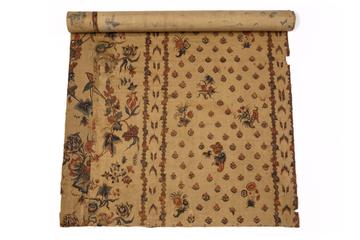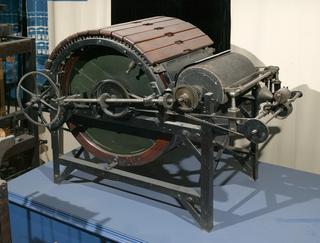
Barber-Colman knotter
- Made:
- circa 1925 in Trafford






Barber-Colman handheld knotter made for use by weavers in the textile industry. Made from leather and metal in the 1920s in Brooklands, Trafford.
Knotters were gadgets used by textile workers. They were commonly used to connect the replacing warp threads on a weaving loom. This knotter, with one small motion of the hand, joined threads together consistently and strongly.
In weaving mills textile workers frequently needed to join lengths of thread. There could be up to several hundred warp threads on a loom. When the warp thread ran out the replacement threads needed to be joined to continue producing the cloth. Knotting all these threads together by hand would have been incredibly time-consuming. Mechanising the process by using knotters saved time. This meant that workers could be more productive, and fewer people were needed to keep the machines running and producing cloth.
This knotter was designed to be used in one hand, around the palm and wrist, held in place by an adjustable leather strap. The thumb-activated trigger produced the motion that knots the threads. Other examples of knotters were supported by a belt around the waist of the weaver, allowing the movement of the hand to be less restricted.
This knotter was designed by Barber and Colman Ltd, an American company based in Rockford, Illinois. However, there was a subsidiary company based in Manchester, established in 1902.
Details
- Category:
- Textile Industry
- Object Number:
- Y1975.44
- Materials:
- metal (unknown) and leather
- Measurements:
-
overall: 52 mm x 130 mm,
- type:
- knotter
- credit:
- Gift of Mr T Mills




